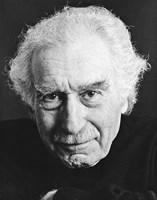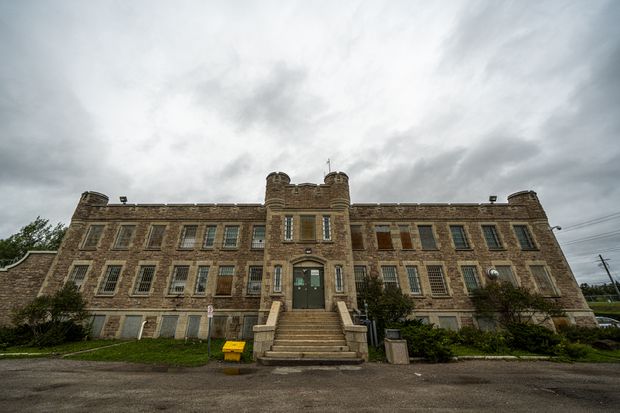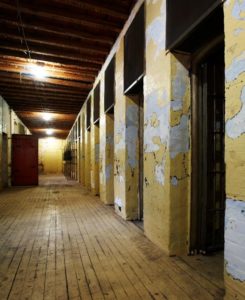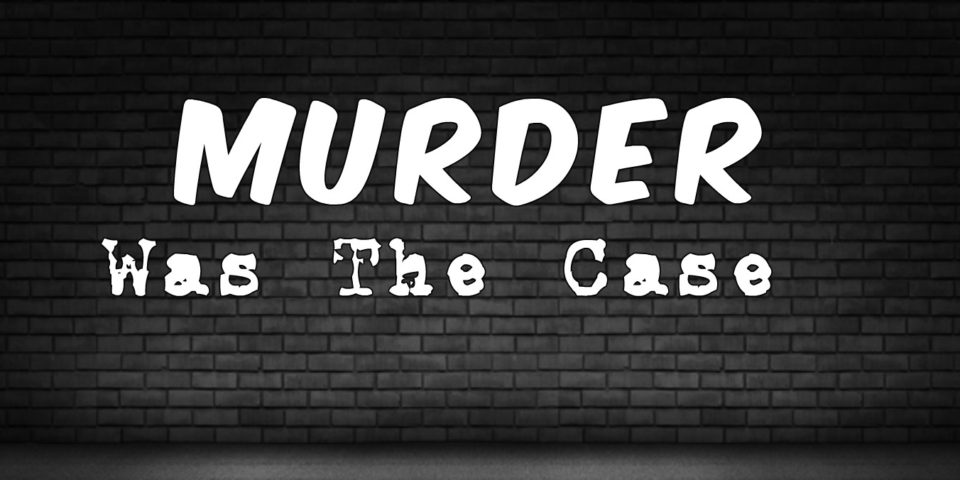Photo by DAVID JACKSON/THE GLOBE AND MAIL
To figure out the future of the Thunder Bay District Jail, look to the past.
ORIGINALLY PUBLISHED IN THE GLOBE AND MAIL FEBRUARY 27, 2021
Dangerous, inhumane, unsanitary: just a sample of the litany of accusations levelled against the Thunder Bay District Jail in a blistering exposé published late last year in The Globe and Mail.
According to the report, the jail is critically understaffed and chronically overcrowded. Nine inmates have died since 2002, several from drug overdoses. An Indigenous man, Adam Capay, spent more than four years there in pretrial solitary detention. Inmate-on-inmate violence is rife. There was a riot and hostage-taking in 2015; 15 correctional officers refused to return. And more recently, an outbreak of COVID-19 has sent staff and provincial authorities scrambling.
A bleak fortress
The provincial jail, built in 1926, resembles resembles a bleak fortress, complete with turrets at the front entrance and the corners of the façade. If this building was designed to inspire terror, it has certainly succeeded beyond anyone’s wildest dreams, although not in the way originally intended. It has clearly failed both the guards and the guarded. Calls to close down the facility began in 1976 and have become increasingly insistent. Given the preponderance of Indigenous inmates among the jail’s population, some activists argue that a completely different option to incarceration would be appropriate.
The Ontario government, however, has other plans. The wheels move excruciatingly slowly, but eventually, perhaps by 2025, a new 325-bed facility will be built to replace both the antiquated jail and also the nearby Thunder Bay Correctional Centre. So that neo-Gothic house of horrors, riddled with mould and asbestos, will finally be shuttered.
And then what?
As has been the case with many obsolete correctional facilities in Ontario, the question will arise: What should be done with the structure once it has been shut down? Other grim relics of Ontario’s penal past have met with a variety of fates.
Despite vigorous protest, Kingston’s 118-year-old Frontenac County Jail, once the scene of judicial hangings of convicted murderers, was demolished in 1973. The site is now used as a parking lot. The Peel County Jail in Brampton, Ont., built in 1867 and closed in 1977, has been creatively incorporated into the Peel Art Gallery, Museum and Archives.
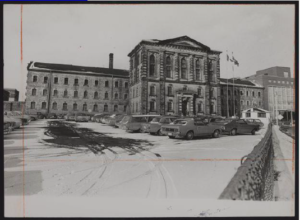 An interesting comparison is Toronto’s formidable Don Jail, which, in the late 1970s, was facing its own existential crisis.
An interesting comparison is Toronto’s formidable Don Jail, which, in the late 1970s, was facing its own existential crisis.
The Don Jail
Located on the east side of the Don River, once remote from the city but now in the flourishing neighbourhood of Riverdale, this landmark was lauded as a “palace for prisoners” when it opened in 1864. The jail was based on progressive 19th-century penal reforms and state-of-the-art architectural principles.
However, it swiftly degenerated into what’s been called a “hell hole” where both inmates and staff were at risk of violence and death. Overcrowding became the norm. Other complaints over the years included unsanitary conditions, the intermingling of first offenders and seasoned criminals, corruption and mismanagement.
The end came in 1977, when then Ontario minister of correctional services, Frank Drea, told his fellow parliamentarians that he would “close the old Don Jail on Dec. 31, 1977 … forever.” The building would be replaced with a “massive” flower garden for the benefit of patients at the nearby Riverdale Hospital.
According to the media, Mr. Drea’s declaration was supported by all political parties. There were also calls from the public to “tear it down!” But many dissenting voices were raised. Historian Donald Jones, for example, wrote that “history cannot be blotted out by the destruction of buildings.” John Sewell, a former mayor of Toronto, credits a wildly successful poster campaign, urging Torontonians to “Take a closer look!” at the old Don Jail, with helping to save the building.
Heritage Preservation
With advocates of heritage preservation winning the day, what Mr. Drea referred to as that “magnificent monument to human misery” was not torn down. The jail mouldered away until the early 2000s, when an ambitious long-term project restructured the site at the corner of Gerrard Street East and Broadview Avenue. A slew of architects and heritage restorers collaborated to repurpose the Don as the administration centre for Bridgepoint Active Healthcare, which replaced the 1960s-era Riverdale Hospital.
The heritage restoration called for the retention of significant elements of the Don’s grim past: notably, bars on some windows, several original cells, and the execution chamber where 26 men were hanged between 1908 and 1962. The actual gallows, however, are long gone.
“A place of incarceration to a place of healing”
Marian Walsh, former president and chief executive of Bridgepoint Active Healthcare, was the driving force behind the project. She contends that the transformation of the site has changed “a place of incarceration into a place of healing,” thus returning the jail to its reformist roots.
But we should never forget what lies hidden behind the bright white walls and light-coloured floors of the spruced-up building. The writer of a letter to the media in December, 1977, maintained that “it doesn’t matter now whether it stands, as the hurt has been done.” Toronto had “a self-made curse – because there will always be the words: ‘Remember the Don!’”
“Remember the Don!”
The importance of remembering cannot be overstated. Without memory, progress is impossible. My studies of the Don, past and present, however, have convinced me that erasure and “healing” are not enough. We need some form of monument to remind us of how we’ve treated our society’s outcasts.
Reflection, respect, remembrance of lives lost or tragically damaged, the expertise of heritage and related groups, and public engagement: These are just a few of the factors that the province and the City of Thunder Bay would do well to consider when the time comes to decide what to do with their death trap.
